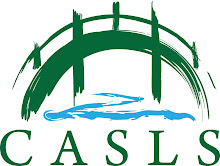From http://geodia.laits.utexas.edu/faq.html
GeoDia is meant to be a teaching and learning tool for anyone interested in the material culture of the ancient Mediterranean world. It seeks to represent the spatial and temporal distribution of human activity in that area, roughly from the emergence of complex literate societies in the Middle East to the foundation of Constantinople as the eastern capital of the Roman Empire (so from the fourth millennium BC to ca. 330 AD, though a few sites have information from earlier or later periods). Its dataset consists of two basic elements: sites (defined as geographic points where long-term human activity has left visible remains) and events (defined as things that happened at a specific geographic location and at a single point in time in the past). To avoid visual confusion, the two units are viewed separately. Sites appear in the timeline as bars, events as points.
When you navigate to the main page, you'll see a frame on the right-hand side of the screen with a series of cultural and regional designations with check-boxes. This frame has four tabs across the top and three down the left side. By default, you begin in the "Browse" tab on the top and the sites tab (represented by a little building) on the side. The other tabs across the top allow you to search for a site by keyword ("Search"); to look at and manage the list of sites produced by browsing or searching ("Results"); and to see the periods and images associated with a site ("Details").
The two other tabs on the side allow you to browse or search images (represented by the icon of a camera) or events (represented by an exclamation point). The Images tab only permits a free-text search, which returns a series of image records with thumbnails. The Events tab acts like the Sites tab, with "Browse", "Search", "Results", and "Details" tabs across the top. In this case, "Results" provides a list of events with brief descriptions, and "Details" provides the full text we have for that event.
Learn more about this site at http://geodia.laits.utexas.edu/faq.html
The Geodia home page is available at http://geodia.laits.utexas.edu/timemap.html
Read a review of this resource at http://www.freetech4teachers.com/2013/07/geodia-timeline-and-map-of.html#.UfXCglOE6C8
Subscribe to:
Post Comments (Atom)





No comments:
Post a Comment
Note: Only a member of this blog may post a comment.